Good Garden, Evil Garden
I’ve been trying to figure out how to say it… we don’t really have the space for two separate “gardens,” but we’re planning an area, an aspect, a side, which will be filled with light and brilliant flowers… and another part that will be full of the most interesting, blood-thirsty, wicked things we can find. A good garden, and an evil garden.
Our criteria for the dark-sided plants has been at least one of the following:
- Color: black or very dark flowers, leaves, or fruit. No yellow.
- Weaponry: spines, spikes, poisons. We’re going for soft-core Goth, here… I don’t care if the spikes on a Datura flower are soft, they LOOK spiky. I’m not planning on stinging nettles. I’m doing my damnedest to eliminate the poison ivy.
- Night-blooming, especially fragrant, flowers. Daturas, brugmansias, moonflowers, cestrums.
We’ve got lots of things starting from seed, and we’re buying some as plants; we want as many perennials as we can get, but there are some things that just can’t overwinter here. Purple castor, with its brilliant carmine seed cases filled with deadly seeds and covered in sharp spines, is a clear winner. Double purple Datura metel, with spiny seed cases, spiky fragrant purple flowers that open at night, and a hallucinogenic and deadly alkaloid cocktail, is a triple threat. We find ourselves browsing along the nursery shelves, and ending up with varieties like Penstemon “Dark Towers,” Dahlia “Night Queen,” Rudbeckia “Green Wizard.” You get the idea.
Ironically, in the search for nocturnal, purple, and poisonous, I ran across a lot of purple edibles. These seedlings of Double Purple Orach will make a spinach-like green similar to amaranth. Just pick your salad very, very carefully. I’ve told Chris I wouldn’t put anything toxic in the raised beds.
Here’s the side yard where all this planting is taking place. Raised beds in the back are the vegetables, with bees at the very rear corner. In front of that, the Light and Happy Garden, and at the front, the Dark and Gloomy Garden. The buckets are full of tree mulch; I’ve been carting it home, one carload at a time in my little Saturn. SO much cheaper than buying bags or truckloads. I think we need about 10 more buckets full, maybe a little more. It’s going down over a layer of cardboard, mostly reclaimed from Jack in the Box; they have a clean dumpster for recyclable cardboard only, so I don’t get icky retrieving it. You learn some things you don’t want to know, when you get the labeled packages from fast food. One example: the tacos from Jack in the Box arrive at the store frozen, but fully cooked. They are then fried.
The Spring Greens are plugging right along! We’ve already enjoyed one small salad, with lettuce, purple mustard, and spinach.
And again, with the three-cotyledon plants; an Osaka Purple Mustard. Is this more common than I think, and I just haven’t seen it a lot? Or do they know what I’m planning with the weird plant garden, and they’re getting a head start? Unfortunately, the three-cotyledon tomato became perfectly normal, and then blended in and got lost with the rest. Or maybe it’s just under cover.
And I forgot to check my tags to see what this little freak seedling is. It makes me strangely happy to have seedlings in red, purple, and some even in good strong black.

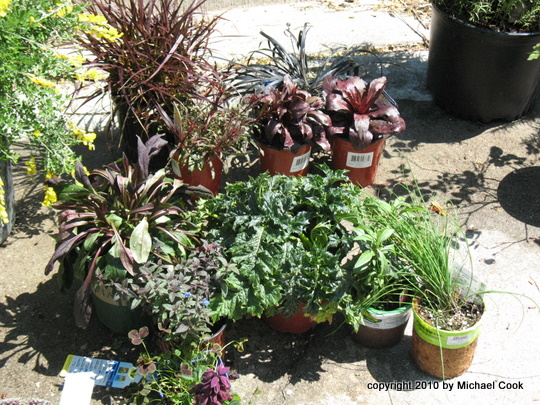
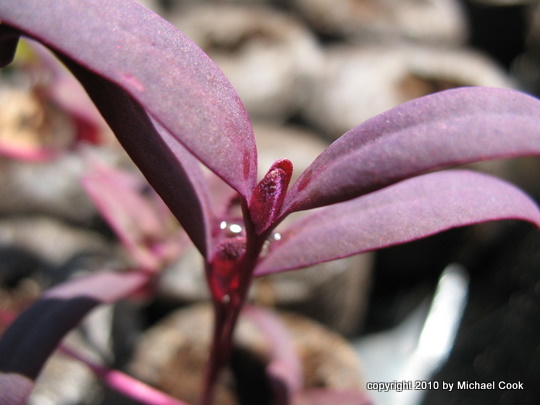
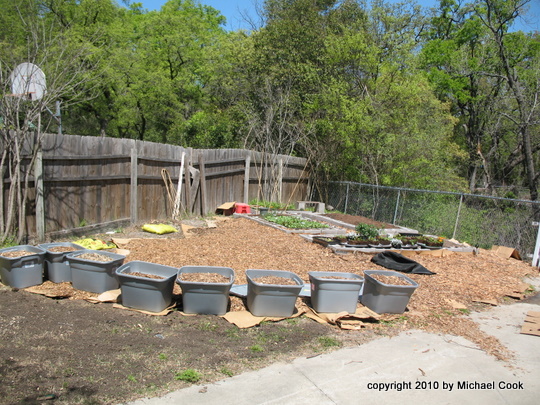
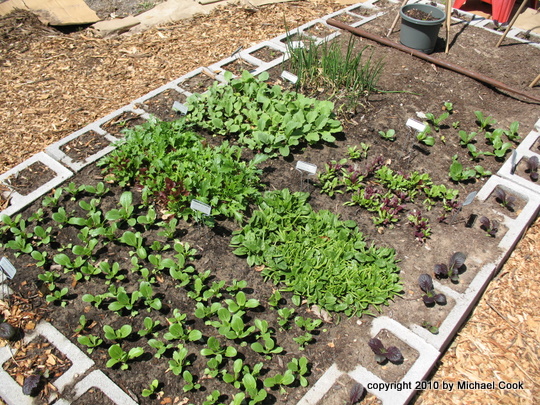
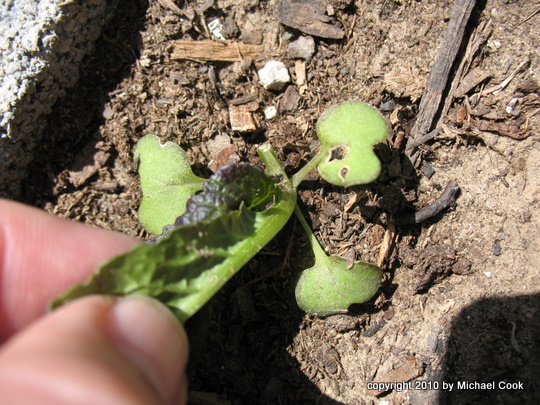

There’s a black variation of the hollyhock (Alcea rosea ssp. nigra) that has darkest-purple-to-black blossoms; it was a common plant for the traditional German “Bauerngarten” with its mix of edible and decorative plants. The blossoms are edible and can be used to colour drinks a deep red without changing the taste. I think they look a little creepy, with their happy green stalks and then the deep black blossoms with a reddish tinge. If I were doing an “evil garden”, they would be on my must-have list!